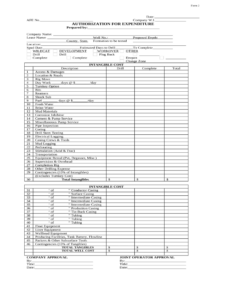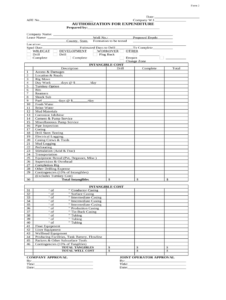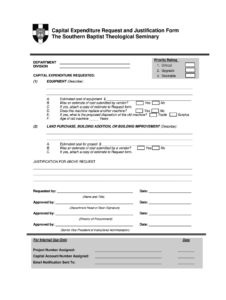Utilizing a standardized structure for training proposals facilitates clear communication between departments, streamlines the approval process, and promotes effective resource allocation. It ensures that proposed training programs address demonstrable skills gaps, contribute to strategic goals, and deliver measurable improvements in performance, productivity, or other relevant metrics. This structured approach also enhances accountability by establishing clear expectations and providing a basis for evaluating training effectiveness.
This discussion will further explore key components of these frameworks, including identifying training needs, defining measurable objectives, calculating return on investment, and presenting a compelling narrative to decision-makers. Examples and best practices will be provided to guide the development of effective proposals for employee development initiatives.
Key Components of a Training Request Framework
Effective frameworks for requesting training investments typically incorporate several crucial elements to justify the need and demonstrate potential returns. These components ensure alignment with organizational goals and facilitate informed decision-making.
1. Executive Summary: A concise overview of the proposed training, its purpose, and expected benefits. This section provides a high-level summary for stakeholders to quickly grasp the key aspects of the request.
2. Needs Analysis: A clear articulation of the skills gap or performance deficiency that the training aims to address. This section should provide data or evidence to support the identified need, demonstrating the rationale for the training.
3. Training Objectives: Specific, measurable, achievable, relevant, and time-bound (SMART) objectives that outline the desired outcomes of the training. These objectives provide a basis for evaluating the training’s effectiveness.
4. Proposed Solution: A detailed description of the training program, including content, delivery method, duration, and target audience. This section should justify the chosen training solution and explain why it is the most appropriate approach.
5. Cost-Benefit Analysis: A thorough assessment of the training costs, including direct expenses (e.g., materials, instructor fees) and indirect costs (e.g., employee time). This analysis should also quantify the anticipated benefits of the training, such as increased productivity, reduced errors, or improved customer satisfaction, demonstrating a return on investment.
6. Risk Assessment: An identification of potential risks associated with the training, such as low employee participation, inadequate resources, or ineffective training delivery. This section should propose mitigation strategies to address these risks.
7. Evaluation Plan: A clear outline of how the training’s effectiveness will be measured, including key performance indicators (KPIs) and data collection methods. This plan ensures accountability and provides insights for future training initiatives.
8. Implementation Timeline: A proposed schedule for implementing the training program, including key milestones and deadlines. This timeline provides a roadmap for execution and ensures timely completion.
Careful consideration of these components strengthens the justification for training investments and increases the likelihood of securing approval, leading to a more skilled and productive workforce.
How to Create a Business Case Template for a Training Request
Developing a robust template ensures consistency and effectiveness when requesting training investments. The following steps outline a structured approach to creating such a template.
1. Define the Scope: Determine the specific areas the template will cover. Consider the organization’s size, industry, and training needs. A template for leadership development will differ from one for technical skills training.
2. Establish Key Sections: Incorporate essential components such as an executive summary, needs analysis, training objectives, proposed solution, cost-benefit analysis, risk assessment, evaluation plan, and implementation timeline. Each section should have clear instructions and prompts to guide users.
3. Develop Standard Formatting: Create a consistent layout with clear headings, subheadings, and formatting styles. This enhances readability and professionalism. Consider using tables or charts for presenting data effectively.
4. Incorporate Placeholder Text: Provide guiding text within each section to prompt users with the required information. This ensures completeness and consistency in requests.
5. Pilot Test the Template: Distribute the draft template to a select group of users for testing and feedback. Gather input on clarity, usability, and completeness. Revise the template based on the feedback received.
6. Communicate and Train: Once finalized, communicate the new template to all relevant stakeholders. Provide training on how to use the template effectively, ensuring consistent application across the organization.
7. Review and Update: Periodically review and update the template to reflect evolving organizational needs, training methodologies, and best practices. This ensures the template remains relevant and effective.
A well-designed template streamlines the training request process, ensuring that proposals are thoroughly researched, clearly articulated, and aligned with organizational objectives, ultimately facilitating better resource allocation and a more skilled workforce.
Effective management of training investments requires a structured approach to justify expenditures and ensure alignment with organizational goals. Standardized frameworks, incorporating comprehensive needs analyses, clearly defined objectives, detailed cost-benefit analyses, and robust evaluation plans, provide a compelling rationale for training initiatives and facilitate informed decision-making. Consistent application of these frameworks promotes efficient resource allocation and maximizes the impact of employee development programs on organizational performance.
Organizations committed to cultivating a skilled and adaptable workforce must prioritize the development and implementation of robust processes for requesting and evaluating training investments. Adopting standardized frameworks ensures that training initiatives contribute directly to strategic objectives, fostering a culture of continuous learning and driving sustained organizational success.


